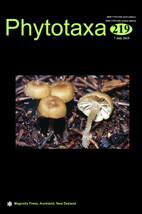Abstract
The North American shining clubmoss, Huperzia lucidula, was originally thought to be endemic to North America. However it was reported from China by Ren Chang Ching in 1981, and hence was believed to have a disjunct distribution in North America and Asia. Since then, in all Chinese literature H. lucidula has been described as a disjunct taxon, although in North American literature it has nearly always only been reported from eastern North America. The studies on the Chinese taxon are at present insufficient to address this taxonomical and biogeographical disparity. In this study we have attempted to unravel this issue using integrative morphological and molecular analyses. Morphological study included a thorough examination of specimens from the entire distribution range of H. lucidula in the USA, Canada and China following field collections. Molecular study included Maximum Likelihood and Bayesian inference phylogenetical analyses of three chloroplast markers: the genes rbcL and matK and the psbA-trnH intergenic spacer. The results showed distinct morphological differences between the North American and Chinese taxa, sufficient to recognize them as separate species. The molecular results corroborated these findings and supported the separation of the two taxa. Based on our results, the Chinese taxon is neither a variant of H. lucidula nor sister to it and therefore the supposed disjunct distribution of H. lucidula is erroneous and a result of misidentification. The Chinese taxon that was firstly reported by Ching as H. lucidula var. asiatica has been elevated to the species rank and a new combination has been made.

